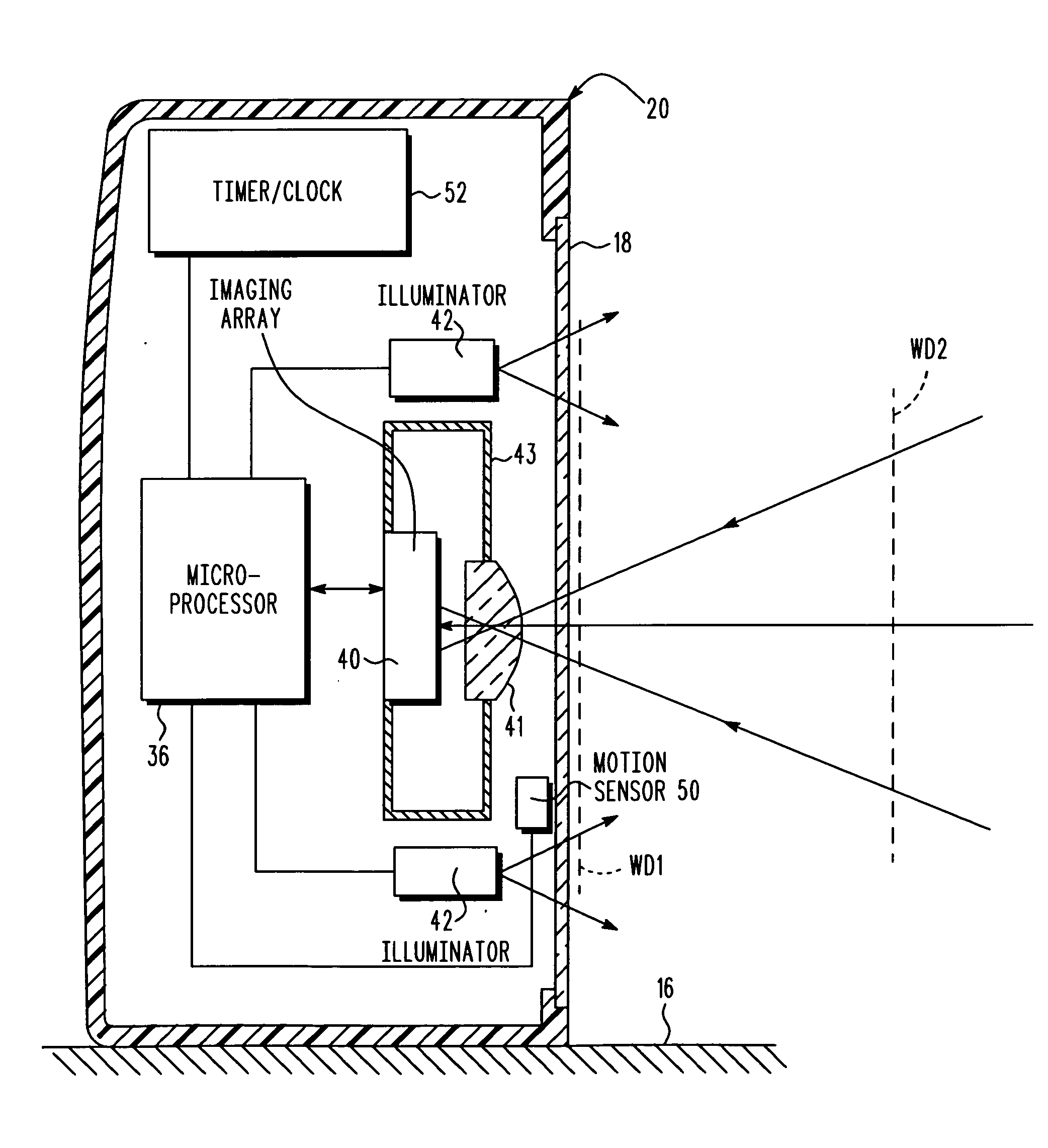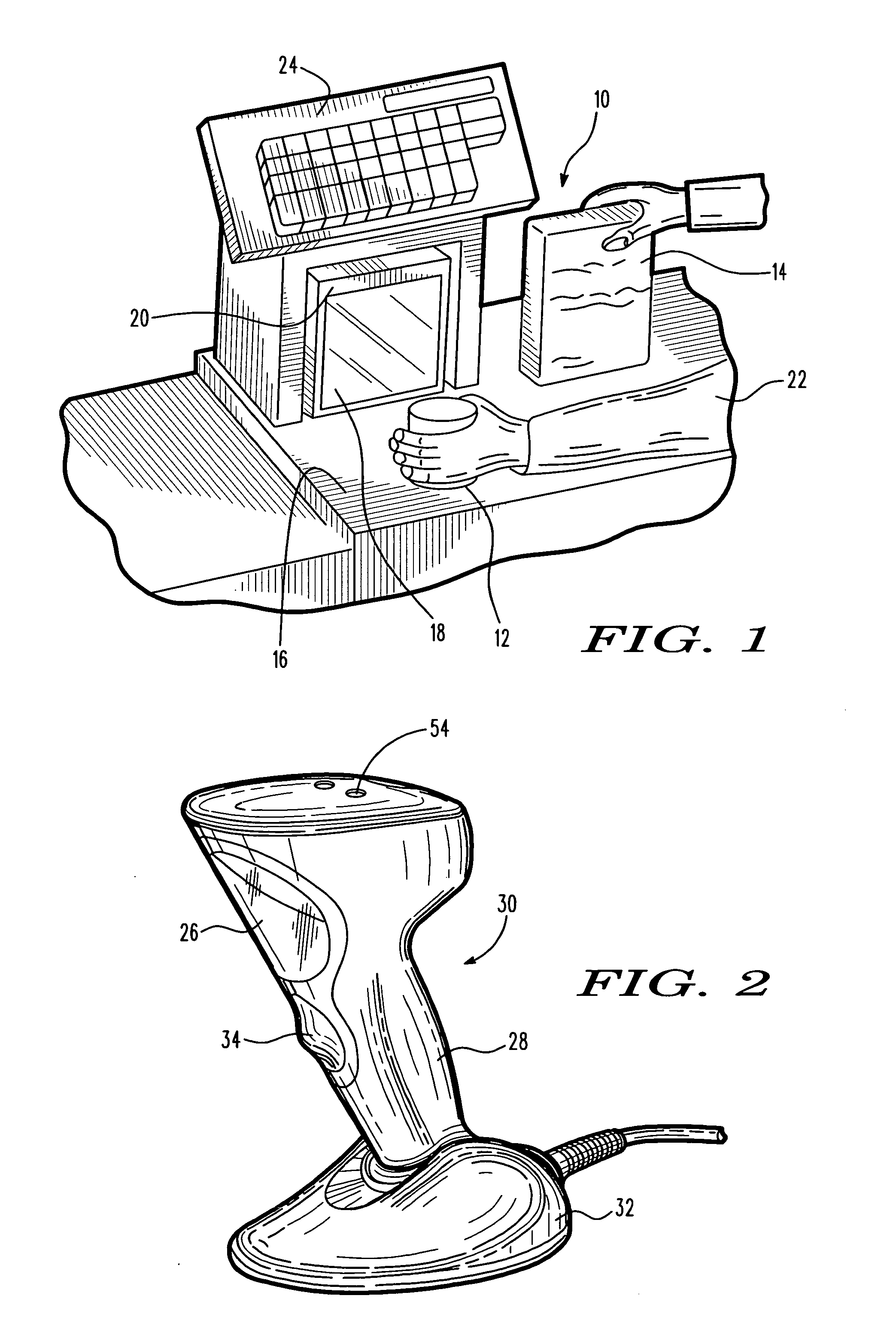Adaptive power management in imaging systems
a power management and imaging system technology, applied in the field of adaptive power management in imaging systems, can solve problems such as power waste, and achieve the effects of reducing power consumption, wasting power, and reducing electrical power consumption
- Summary
- Abstract
- Description
- Claims
- Application Information
AI Technical Summary
Benefits of technology
Problems solved by technology
Method used
Image
Examples
Embodiment Construction
[0024]Reference numeral 10 in FIG. 1 generally identifies a workstation for processing transactions and specifically a checkout counter at a retail site at which products, such as a can 12 or a box 14, each bearing a target symbol, are processed for purchase. The counter includes a countertop 16 across which the products are slid at a swipe speed past, or presented to, a generally vertical or upright planar window 18 of a portable, box-shaped, vertical slot reader or imaging system 20 mounted on the countertop 16. A checkout clerk or operator 22 is located at one side of the countertop, and the imaging system 20 is located at the opposite side. A host or cash / credit register 24 is located within easy reach of the operator. The operator 22 can also hold the imaging system 20 in one's hand during imaging.
[0025]Reference numeral 30 in FIG. 2 generally identifies another imaging system having a different configuration from that of imaging system 20. Imaging system 30 also has a generall...
PUM
 Login to View More
Login to View More Abstract
Description
Claims
Application Information
 Login to View More
Login to View More - R&D
- Intellectual Property
- Life Sciences
- Materials
- Tech Scout
- Unparalleled Data Quality
- Higher Quality Content
- 60% Fewer Hallucinations
Browse by: Latest US Patents, China's latest patents, Technical Efficacy Thesaurus, Application Domain, Technology Topic, Popular Technical Reports.
© 2025 PatSnap. All rights reserved.Legal|Privacy policy|Modern Slavery Act Transparency Statement|Sitemap|About US| Contact US: help@patsnap.com



